All you need to know about your products!

| 3DNews Vendor Reference English Resource - All you need to know about your products! |
||||||
 |
||||||
|
|
||||||
Power supply unit FSP ZEN 400: perfectly noiseless powerAuthor:Date: 20/04/2007  It is unlikely that some of our readers have not heard about the FSP trademark under which power supply units by FSP Group (Taiwan) have been sold for over ten years. The company is widely known worldwide not only as a developer and manufacturer of various power supply systems and units under its trademark. High percentage of FSP produce is manufactured and shipped on OEM/ODM contracts. So, if there is no FSP marking on your PSU, it is highly probable that it came off the assembly line of this company. The assembly of a powerful and absolutely noiseless desktop system is a cherished dream, albeit not attainable to all. Where do fans make most noise? Normally, on video cards, chipset circuits, processors, housing fan systems, and of course on PSUs. 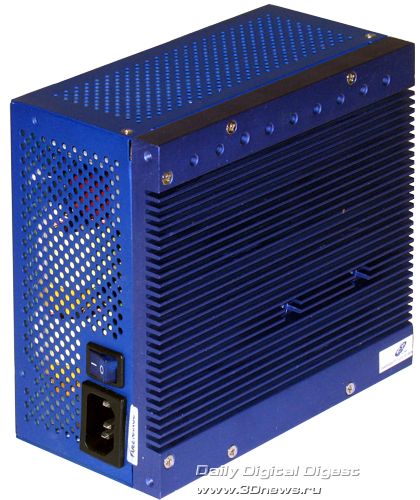 Anyway, I am not talking for all the others: personally, I have long had this dream – to fit a powerful noiseless PC at home and not to annoy the ears of mine, my family, my pets, regardless of any level of computational load. That is why on first seeing FSP ZEN 400 at the expo stand of FSP which was presenting its novelties at CeBIT'07 in March I literally "glued my nose" to the showcase with that exhibit (see CeBIT'07, day two. FSP expo stand) and of course I first asked just that for tests. So as not to get distracted by the inappropriate digression, let me finish my thought on building a noiseless home-based system there and then. The past two years have vividly shown that the computer is growing "vulgar" as it is being promoted into masses, to the market of household electronics. By saying "vulgar" I mean that the formerly "intricate and sophisticated tool for learning the Universe" is increasingly turning to a routine household item like a TV set or a DVD player, while borrowing the design and handling simplicity typical of household appliances. To start with, I am bringing in a traditional table of specifications of the PSU as declared by the manufacturer.
Packaging, package bundle, first impressions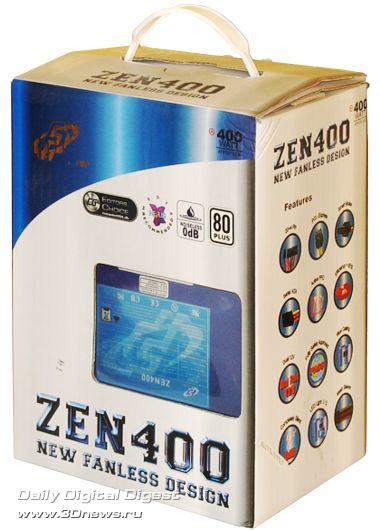 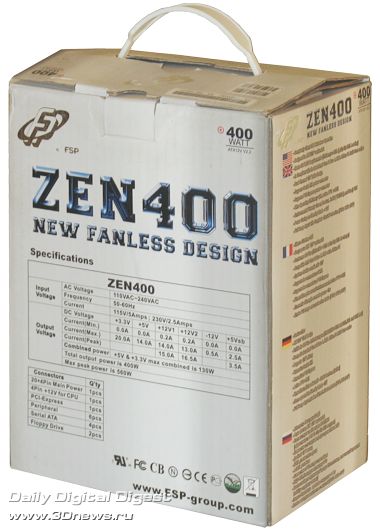 ZEN 400 is shipped in a nice-looking retail package with a handle to carry it around. On the package, there is a window to put up a fine show, with the main specifications on the rear side; on the sides there is a description of the technologies used as well as a brief description of the major advantages in four languages (English, French, German, Russian). 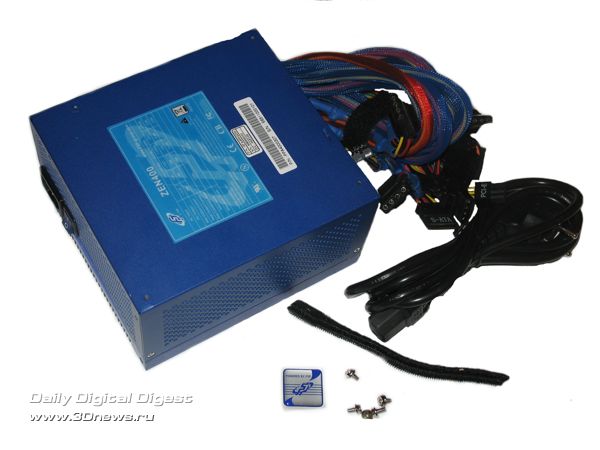 The package bundle of FSP ZEN 400 includes a power cable, a very brief hard-copy user's manual in five languages (English, French, German, Russian, Chinese), fastening screws, proprietary nameplate with the company logo, and a sticker. The design of the PSU is delicate - this is a "boxed product": the noble dark blue color of the housing is augmented by the LED highlight on the on-off switch which is of course of glamour blue color! The weight of FSP ZEN 400 is formidable – as much as three kilos, which is quite normal for the fan-free structure in which nothing else has yet been designed better than a scheme with active PFC and high efficiency as well as good-quality massive radiators. 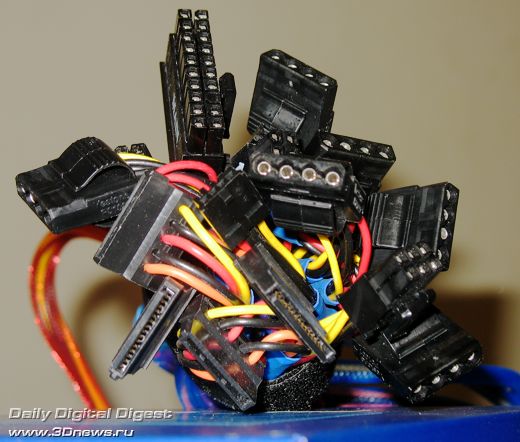 The cable interconnection system is made without the trendy detachable design (which in many ways is absolutely useless) and includes a 24-pin EATX power connector for the motherboard (shared with other devices); a 6-pin power connector for PCI Express devices; two dual power connectors for Serial ATA (2 х 2); a 4-pin 12 V connector, six 4-pin Molex connectors, and one FDD power connector. The cables are packed into a multicolored netlike plastic shield. 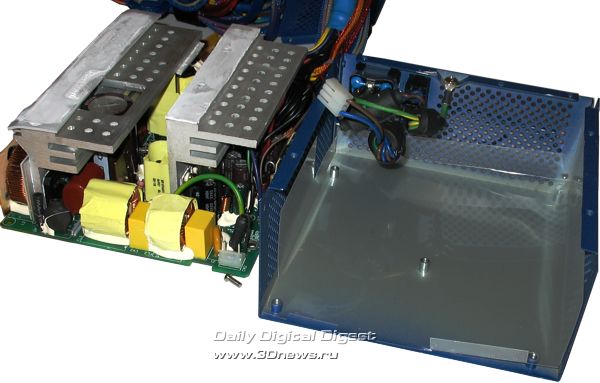 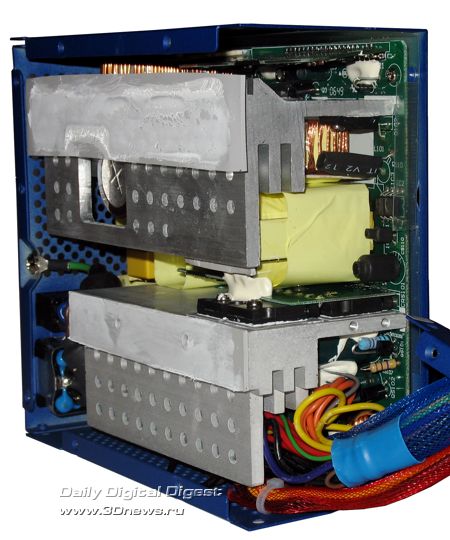 Upon dismantling FSP ZEN 400 down to a screw, you can see the anticipated view – the job of heat absorption and removal is entrusted to powerful radiators which contact the additional heat sink radiator via thermo paste, with the base of the structure used as the radiator. 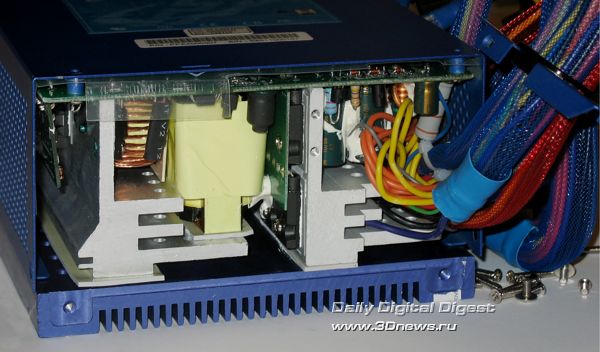 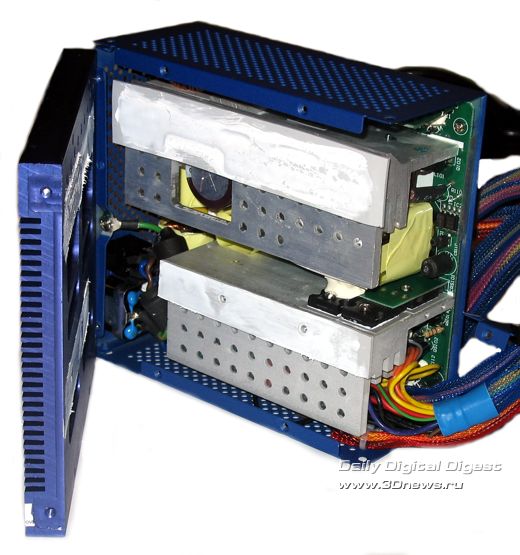 The base used as a radiator in its turn has a ribbed outer surface with milled recesses inside. 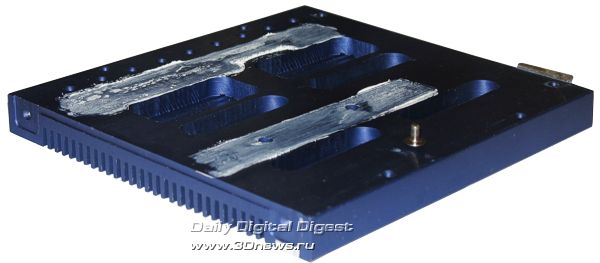 The PSU components are mounted on a single main board, with a few smaller accessory cards soldered into. Unfortunately, I am not an expert at modern circuit technology to present a detailed analysis of the converter circuit used, so I can only suggest that you should feast your eyes with the photos of the system. 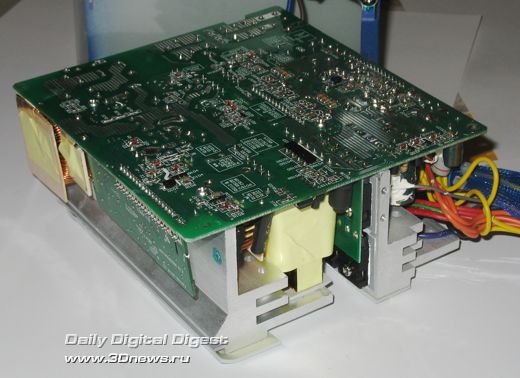 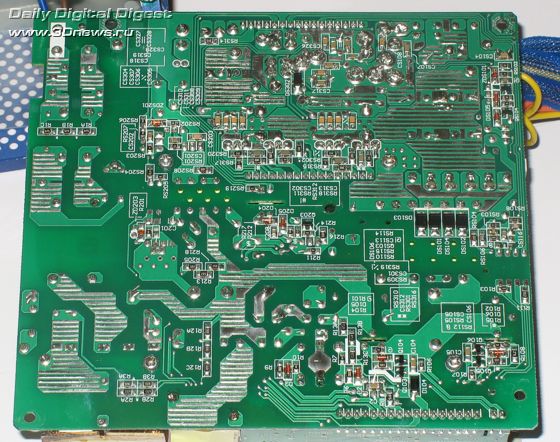 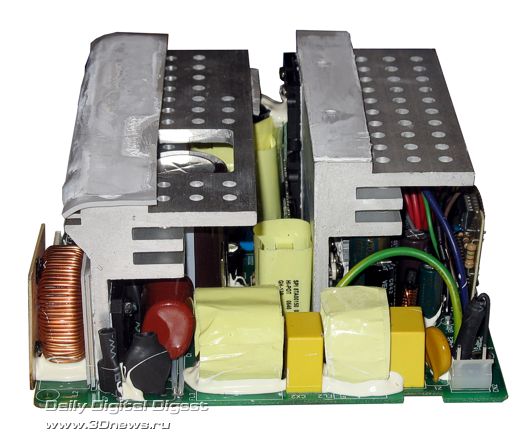 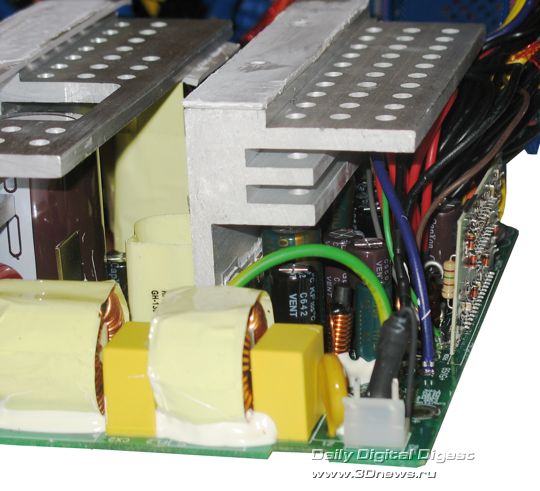 The testing procedureSince the moment of publishing our article, the testing methodology has not undergone any changes – again, the same test bench of PSUs, and equipping it with additional instrumentation is still in progress. Currently, testing of PSUs at 3DNews test lab is performed with a test bench for testing semi-commercial ATX PSUs for computers. The test bench is aimed at reading cross-load characteristics of computer PSUs in the manual and/or automatic mode; at the same time, it allows analyzing the load-carrying capacity of the PSU in question, checking its power parameters declared by the manufacturer, as well as the PSU compliance to the ATX specifications. The test bench allows applying load to each of the five lines of the PSU (+3.3V, +5B, +5VS, +12V1, +12V2) to investigate deviations of the output voltages, as well as build graphs of cross-load characteristics in the automatic mode. Besides, the test bench measures the Power_Good (Power_OK) response, is equipped with the feature of emergency outage in case the Power_OK signal fails. The rated power of the test bench is up to 600 W. Test ResultsThe procedure of running tests is well familiar and practiced to almost automation. You can determine the trial characteristics of FSP ZEN 400 right from the table placed on the housing of the device. 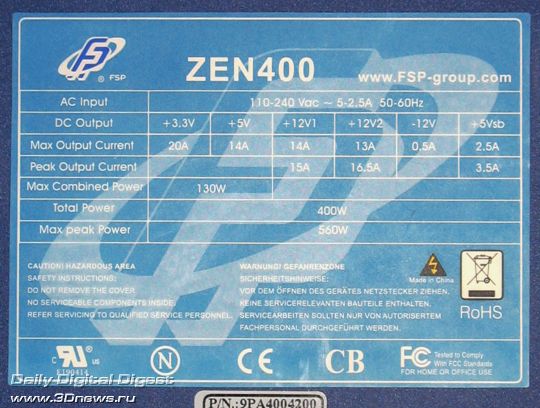 Below are the results for automatic measurement of the cross-load characteristics. The principle of load adjustment is this: with the permanent current in 3.3V and 5V lines, the load current of 12V lines is varied within 0V to a specified maximum, then the current of 3.3V and 5V lines is raised by a specified value, and the process recurs. In our case, the raise for 3.3V and 5V lines was set at two points, in ten points increments for 12V lines. The adjustment is performed at a set increment, which in our case is 200 ms. 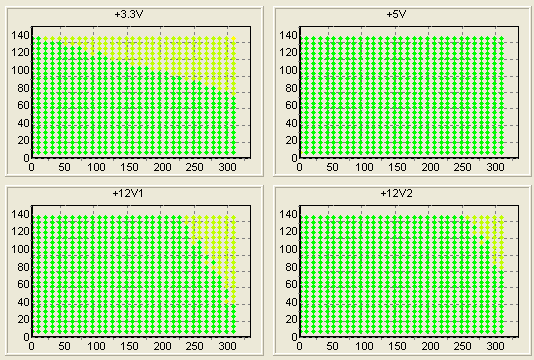 As you can see, FSP ZEN 400 has successfully passed the test with dynamic cross-load. For reference: the green points on the graphs stand for deviations from the nominal less than 1%. Measurement of the static load with the modes set manually has also demonstrated superb operability of FSP ZEN 400. The total instantaneous load on the PSU,as you can see on the below screen was set higher than the recommended 400 W limit, but ZEN 400 PSU successfully withstood. To view the screenshot in full resolution, click on the image below. Finally, the major test of this PSU is that for noiselessness. Clearly, with neither fans nor movable parts inside – there is no noise (at least in the audible range). However, to make things as convincing as possible, we invited an acoustics expert - the honored Rabbit, a Doctor of Computer Sciences, whose part-time service is simply a rabbit called Mityay, a friend of mine. With ears that huge. The expert carefully explored and smelled the system, listened to it running and uniquely acknowledged it as noiseless.  Of course, that is no more than a joke, but every joke has only a part of joke. It's just the rabbits sensitive ears is one of the reasons I intend to build a powerful and noiseless PC. He doesn't like it at all whenever I work late at night or on very early mornings... :-)  Summing it upThe novelty by FSP, a fan-free FSP ZEN 400 PSU in its retail make is far not unique an offering like that on the market: after all, there are even more powerful offerings with passive cooling. However, FSP ZEN 400 may prove to be an acceptable purchase option for you just for a number of reasons. Above all, it is the universality of power supply due to the active PFC scheme, and well as perfect design and high quality of soldering; finally, it is the output voltages which are without a slightest issue. Among the other advantages of FSP ZEN 400 is the quite adequate power cable kit, 400W rated power which is sufficient to build a modern efficiently noiseless PC. And of course - almost forgot - those who find it important can enjoy the nice-looking dark blue design with a glamour blue on-off switch with a LED on. Not only for work, but for much fun. If we leave out the jokes, we must admit that FSP ZEN 400 has deserved it honorable prize from 3DNews Editorial Board - the Editor’s Choice award.  |
|||||||||||||||||||||||||||||||||||||||||
|
|||||